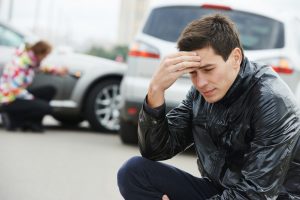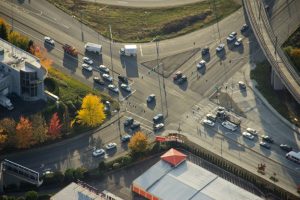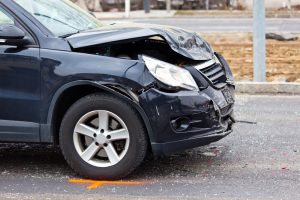Some of the most dangerous intersections in New Jersey, where the most fatal accidents occur, are found in Somerset County, Mercer County, Gloucester County, Camden County, and Burlington County
According to the health protection agency, the Centers for Disease Control, vehicular accidents top the causes of death in the United States. In New Jersey, over 750 car accidents occur daily, according to the New Jersey Department of Transportation data. While the reasons for so many accidents are varied, some common causes include weather, road design, and road conditions. Undoubtedly, drivers have a lot to do with car crashes too. Driving while intoxicated, reckless driving, street racing, texting while driving, and driving while drowsy are a few examples of dangerous driving behavior. The governmental agency responsible for tracking accidents, the National Highway Traffic Safety Administration (NHTSA), notes on their website that drunk and drug-impaired driving cause traffic accidents in addition to drowsiness and speeding.
Approximately 40 to 50% of all car accidents occur at intersections, second only to rear-end collisions. In New Jersey, last year’s Strategic Highway Safety Plan attempts to address the problem of deadly car accidents, targeting intersections specifically. The hope is to reduce that annual average of over 3,000 fatalities a year in the state. Unfortunately, intersections prove to be common crash sites due to human error. The NHTS cites distractions, misjudgments, obstructions, and assumptions as contributors to miscalculating the time and distance of other drivers. For example, a driver that fails to carefully look around to see other drivers attempting to cross the intersection and road conditions or obstructions to clear viewing endangers themself and others. In addition, failure to anticipate other drivers’ reactions, speed, and illegal behavior contribute to collisions.
Drivers who violate traffic laws increase the rate of injury from car accidents.
For example, if you approach a four-way intersection with a stop sign at each of four directions, you must assess the order of vehicles progressing through the intersection. If you disregard the order and take your turn to enter while another vehicle obeying the order does, you could end up crashing. Likewise, inattentiveness causes the same results when you are busy doing other activities in your car and lose sight of what other cars are doing to move through the intersection. New drivers may panic at four-way intersections, while drivers of fast cars or big trucks may feel fearless and proceed before their turn. Interestingly, the cars most commonly involved in accidents are practical, daily-use cars known for safety, like small to medium-sized Hyundai, Subaru, Toyota, Mazda, and Jeep models.
No matter which car they drive, most drivers approach intersections with awareness and caution to avoid scrapes, bumps, and wrecks. However, rear-enders happen when one driver is not allowing the recommended number of car lengths between their car and the one in front. Furthermore, T-bone crashes, one car hitting the passenger or driver’s side of a car moving through the intersection, occurs when one car is rushing to make the light before or after it turns red. Also, making an illegal U-turn or not waiting for oncoming traffic to clear before making a left turn ends up in head-on collisions. Finally, side-by-side collisions happen when drivers cross lanes without looking in their mirrors or over their shoulders.
Inattention, carelessness, and aggressive driving contribute to many accidents.

Some of the deadliest intersections cited in the New Jersey news are located primarily in Gloucester, Somerset, Mercer, Ocean, Monmouth, Camden, Middlesex, and Burlington Counties. For example, Somerset County’s intersection at U.S. Route 23 and Adamsville Road was the site of 98 accidents, 4 of them fatal, over the last four years. Mercer County had two hot spots, one at N.J. Route 129 and Lalor Street and one at U.S. Route 1 and Bakers Basin Road. The total number of accidents at these two intersections total 260, with seven fatalities. Even after several pedestrian deaths at the intersection, the residents around this intersection still have no satisfactory safety solution, such as a pedestrian walkway or footbridge, despite installing a crossing guard at Lalor at the city’s expense.
May the county or state have some responsibility in the event of an accident?
When a pedestrian or vehicle driver is injured in a poorly designed or maintained intersection, the government may bear some responsibility for the damages a victim suffers. And if officials are aware that a higher than the usual number of accidents occur at specific locations, they may be negligent in not addressing the dangerous condition. Whether the overgrown trees, poor design, or the sheer number of pedestrians and vehicles share the same roadway, the city, county, or state engineers and other workers responsible for designing and maintaining the roads may bear some responsibility. However, the fault for vehicle-on-vehicle collisions falls mainly on one party or another, or partially both.
An inattentive, impaired, or aggressive driver that causes an injury, accident, or fatality can be forced to compensate the injured driver and passengers damaged by the at-fault driver’s negligence. They or their insurance provider must pay the cost of all losses incurred by the innocent victims, including repairing the vehicle (or replacement if totaled), any medical expenses due to the accident, and lost income due to the accident and its aftermath. When pursuing a personal injury claim, the party responsible may also be required to pay damages for pain and suffering that resulted from the crash. In addition, they may have to pay for the wrongful death of those lost in a fatal accident. Finally, violating traffic laws, drunk driving, or extreme recklessness, like street racing through an intersection, may warrant punitive damages being awarded to the injured victims.

Contact our Staff of Personal Injury Attorneys for a free consultation
At The Law Office of Cohen & Riechelson our personal injury attorneys regularly deal with insurance companies and other parties when it comes time to negotiating settlements to conclude a personal injury or wrongful death claim. We also have experience bringing cases to trial when a settlement is not possible or unlikely.
Ultimately, our personal injury lawyers are committed to serving our clients’ best interests in Trenton, Princeton, Lawrence Township, East Windsor, and the Mercer County Area. We also fight for clients injured in auto accidents and other types of accidents in Somerville, Bridgewater, Somerset County, and New Jersey counties throughout the Southern and Central parts of the state.
Contact (609) 528-2596 to speak to a local personal injury attorney with extensive litigation experience about your motor vehicle accident claim.


